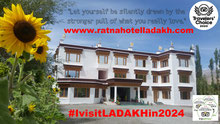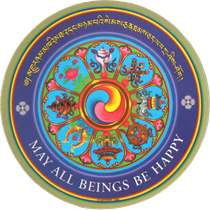EIGHT GREAT STUPAS (CHÖRTEN)
In Tibetan Buddhism there are 8 types of stupas which
refer each to one specific major event in Lord Buddha's Life. In Ladakh there are many beautiful examples of this group of stupas. In every day life, in Ladakh a stupa is highly respected and
venerated and is of great importance.
The 8 different types of stupas are:

1. The Lotus Blossom Stupa:
Buddha's Birth in the Lumbini Garden at Kapilavastu in Northern India in the 6th Century BCE.
The steps of the stupa are round and decorated with lotus flower petals.
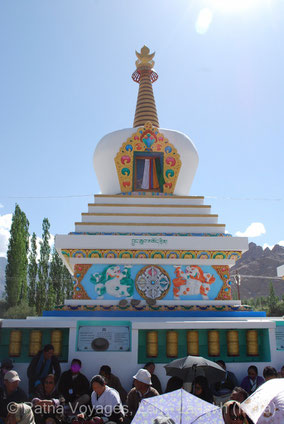
2. The Enlightenment Stupa:
Buddha's Atteinment of Enlightenment at age 35. After meditating 49 days under a tree at Bodhgaya, Buddha understood the true nature of all phenomena and realized that all sentient beings without exception have the same potential for enlightenment, the "Buddha Nature".
The steps of this stupa are rectangular and without any decoration.
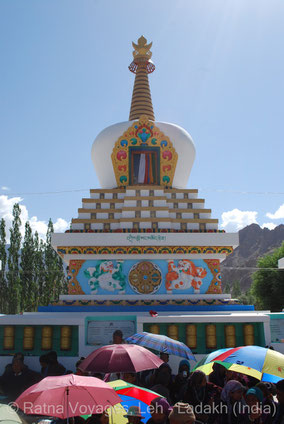
3. The Stupa of Turning the Wheel of Dharma (Stupa of Many Doorways):
Buddha's first teachings after Enlightenment in the Deer Park at Sarnath, near Benares: Four Noble Truths, Six Perfections, Noble Eightfold Path and the Twelve Links of Dependent Origination.
The steps of this stupa are decorated with doorways symbolising the opening of the doors of the Dharma.

4. The Great Miracle Stupa:
This stupa commemorates the Buddha's display of miracles at Shravasti where he was challenged to demonstrate his realization and performed a different miracle every day for 15 days.
Each of the four steps, in each of the four directions, have central extensions.

5. The Stupa of the Descent from Tushita Heaven:
Maya Devi, the Buddha's mother, was reborn in a God realm called Tushita Heaven. The Buddha spent three months there to repay her kindness and taught his mother the path to enlightenment. This stupa represents Buddha's return from the celestial realms in order to continue teaching the path to enlightenment.
Each side of the stupa has a stairway in the centre of the four steps.
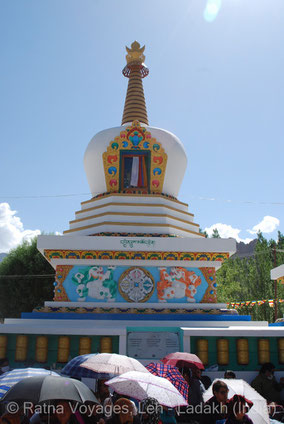
6. The Stupa of Reconciliation:
Buddha's resolution of a dispute among the sangha.
The steps of this stupa are octagonal with eight corners and eight sides.
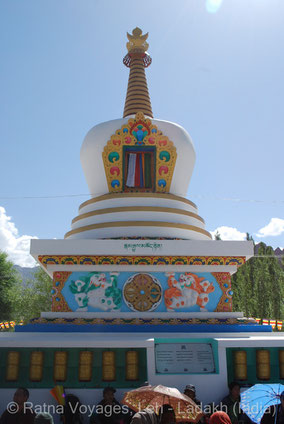
7. The Stupa of Complete Victory:
Buddha's prolonging of his life by three months after one of his disciples had pleaded him not to pass away.
The steps of this stupa are round.
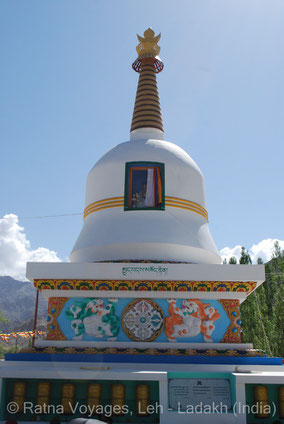
8. The Parinivana Stupa:
Buddha's passing unto nirvana, a stateof true peace which is beyond death. With his final words, the Buddha urged his followers to be diligent in their efforts to attain enlightenment. Lying on his right side and in a state of profound meditation, the Buddha left the world and passed into nirvana.
The vase of this stupa rests directly on the throne without any steps.




